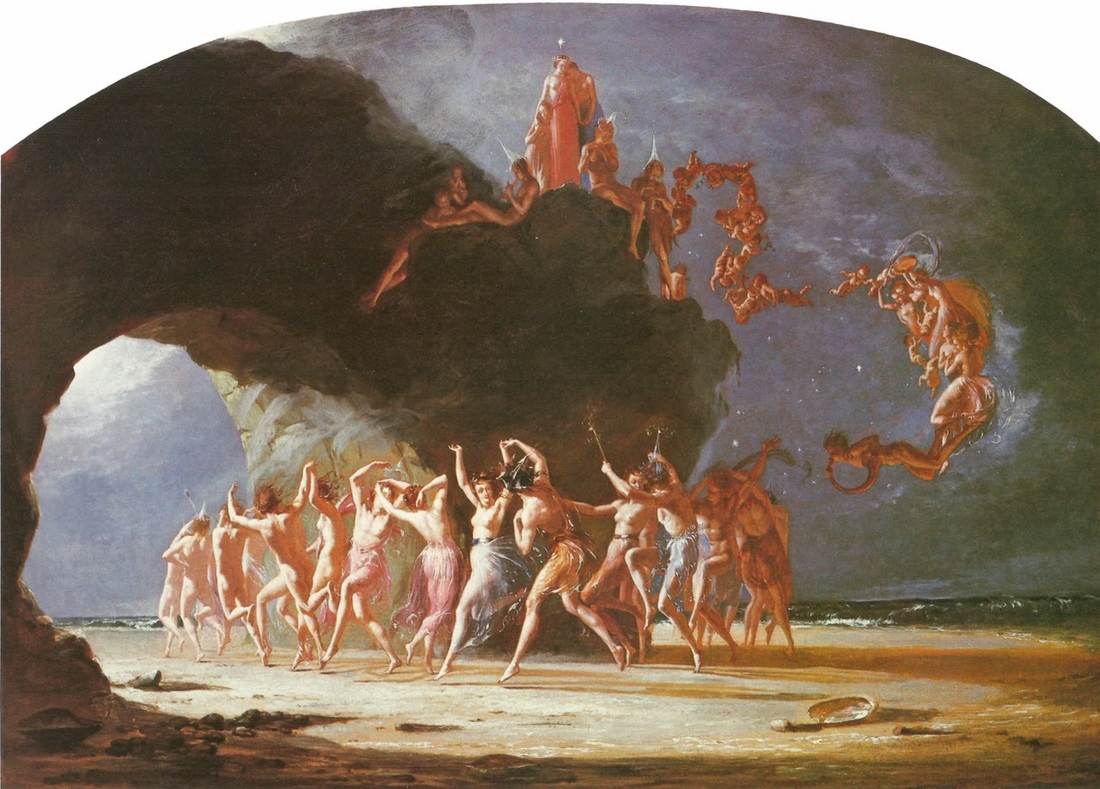For my visualizing assignment, the images fall into three groups based on the passages in the play that they illustrate. Richard Dadd's Come Unto These Yellow Sands (1842) and William Hogarth's A Scene from "The Tempest" (c. 1730) are both oil paintings that depict Ariel’s first song in the play.
|
This is the second post in a series. To start from the beginning, click here. For my visualizing assignment, the images fall into three groups based on the passages in the play that they illustrate. Richard Dadd's Come Unto These Yellow Sands (1842) and William Hogarth's A Scene from "The Tempest" (c. 1730) are both oil paintings that depict Ariel’s first song in the play. The Dadd painting above draws attention to its textual source in the title, which points students to the opening lines of Ariel’s song as he is leading Ferdinand to Miranda, “Come unto these yellow sands, / And then take hands; / Curtsied when you have and kissed— / The wild waves whist— / Foot it featly here and there; / And, sweet sprites, bear / the burden” (1.2.378-384). This painting is immediately striking because it imaginatively reinterprets the events of the play. In Shakespeare’s play we see Ariel alone on stage with Ferdinand, but we hear the other spirits “dispersedly” from several directions offstage (1.2.385 s.d.). Dadd draws our attention to the “sweet sprites” who “bear / the burden” or the refrain of a song. The words of the song seem to be about romantic love: taking hands, dancing, curtsying, and kissing. It is easy for students to see this song as simply anticipating the courtship that is about to happen between Miranda and Ferdinand. Dadd suggests the possibility of a fairy dance, so that in these lines the sweet sprites are taking hands and dancing with each other instead of Ariel directing Ferdinand to act a certain way with Miranda. In fact, Dadd seems to eliminate Ferdinand from the painting entirely. The poem places Ariel in a community, one that is governed over by a Fairy Queen (perhaps Ceres, since she appears to be flanked by a daughter) rather than by Prospero. In his interpretation of the play, Dadd edits out the humans and creates a world that is entirely fey. By displacing Prospero from the play’s power structure, Dadd creates a subversive reading of the play.
0 Comments
Leave a Reply. |
Claire Dawkins
English Instructor at Stanford's Online High School Archives
August 2015
Categories
All
|

 RSS Feed
RSS Feed